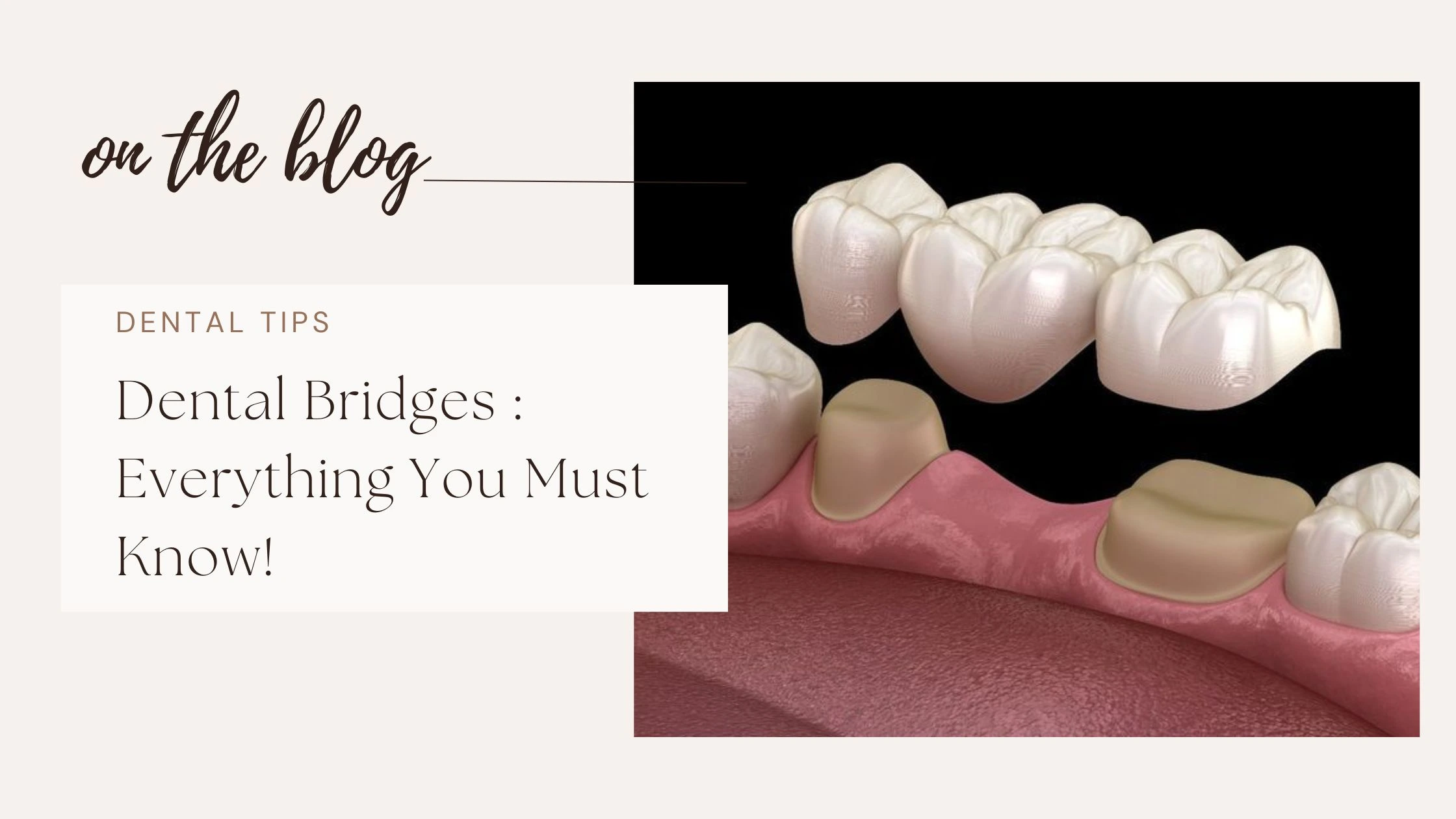Dental Bridges: Everything You Must Know!
What is a dental bridge?
A dental bridge is a fixed prosthetic device used to replace one or more missing teeth. It consists of artificial teeth supported by abutment teeth, which are either natural teeth covered with crowns or dental implants.
They help to restore the aesthetics, maintain facial shape and function, and prevent shifting of adjacent teeth, bite misalignment, and jawbone deterioration.
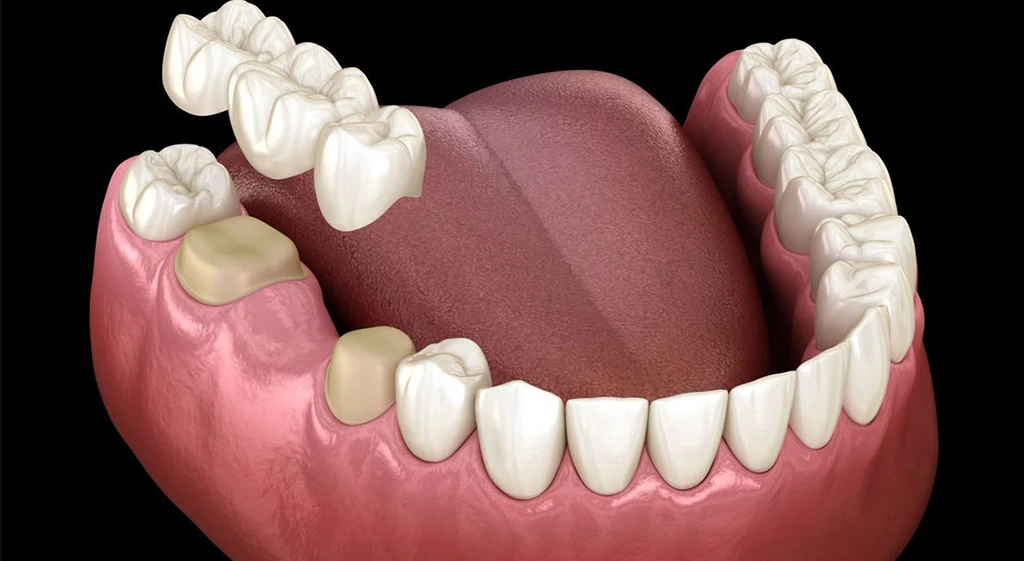
When is a Dental Bridge needed?
A dental bridge is needed when a person has one or more missing teeth to restore function, aesthetics, and overall oral health.
Problems Caused by Missing Teeth
If there is a missing tooth or teeth, the adjacent teeth or teeth in the opposite jaw generally tend to shift towards the empty space, which leads to several problems, which may include:
- Difficulty in chewing or speaking
- Misalignment of teeth and bite problems
- Jaw problems
- Loss of facial structure
- Affects aesthetics
Types of Dental Bridges
Dental bridges come in different types, each designed to replace missing teeth based on the patient's needs. The choice of bridge depends on factors such as the number of missing teeth, the condition of adjacent teeth, and overall oral health. Below are the four main types of dental bridges:
Traditional Dental Bridge
- A traditional dental bridge consists of one or more pontics (artificial teeth) in between and is held in place by dental crowns on both ends, which are cemented on adjacent natural teeth (abutments).
- They are the most common types of dental bridges and are ideal when both sides of the missing tooth have strong, healthy teeth present.
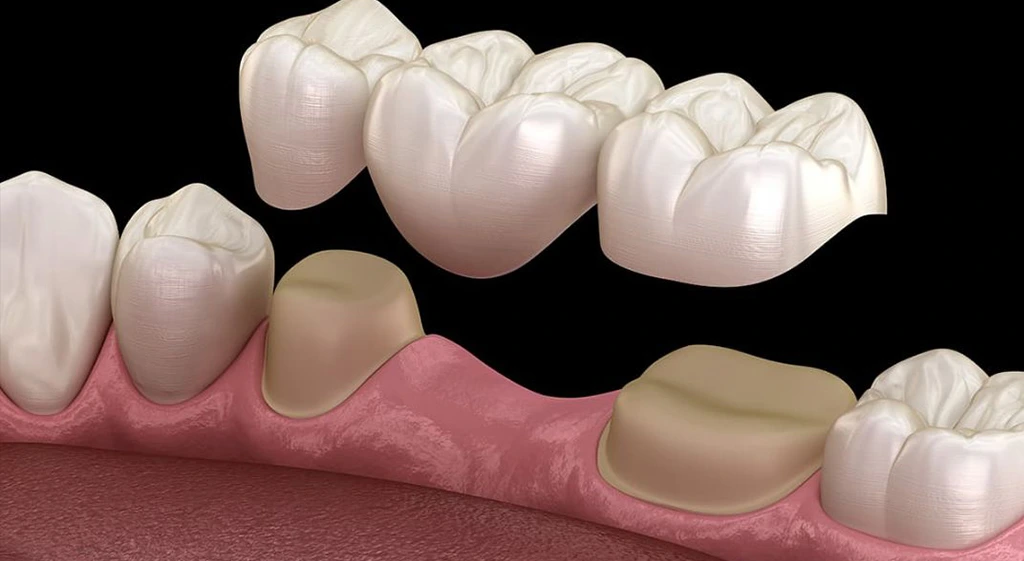
Cantilever Dental Bridge
- A cantilever bridge consists of an artificial tooth that is supported only on one side by an adjacent natural tooth, differing from traditional bridges that require support on both sides.
- A cantilever bridge is recommended when the missing tooth is in the area of a low biting pressure area.
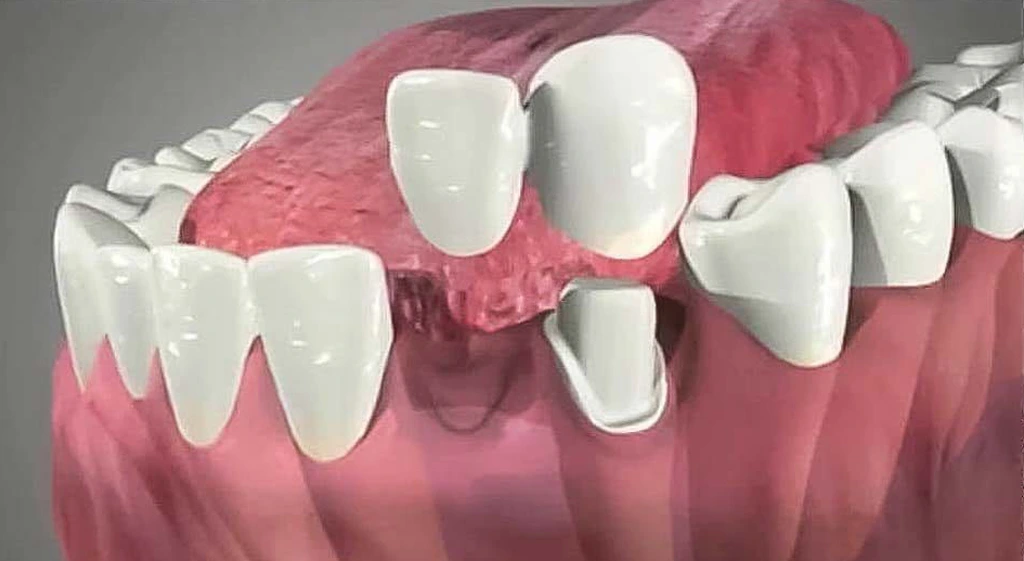
Maryland Dental Bridge
- A Maryland bridge is a conservative tooth replacement option. It is also known as a resin-bonded bridge.
- In a Maryland bridge, the pontic is supported with the help of metal or ceramic wings (very thin extensions) that are cemented to the lingual surface of adjacent natural teeth.
- They require minimal preparation on the tooth surface and are often used to replace missing front teeth and when the adjacent teeth are healthy and intact.
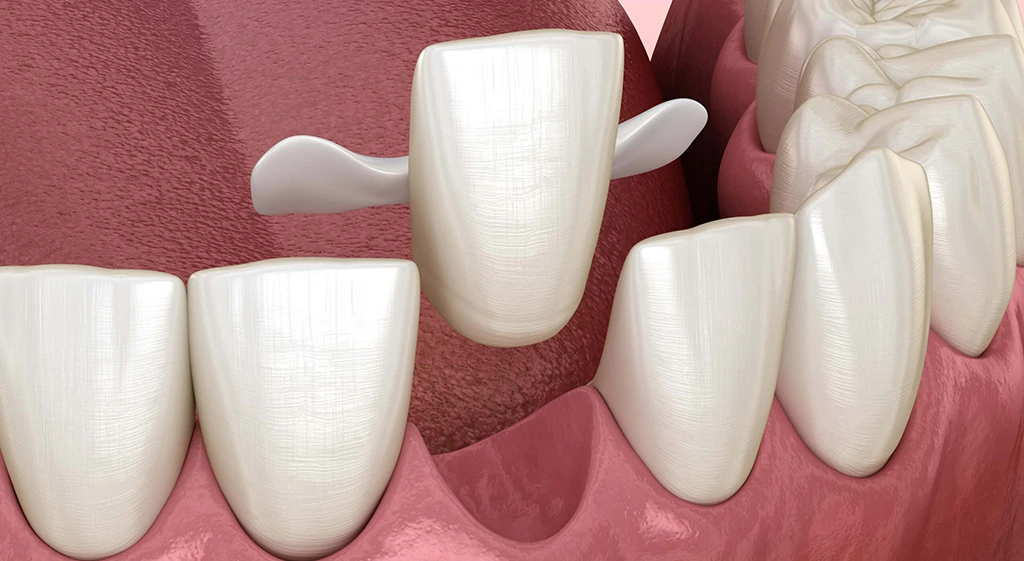
Implant-supported bridge
- An implant supported bridge is anchored on top of dental implants instead of cementing it on natural teeth.
- A dental implant is a screw-like prosthetic device that is surgically placed in the alveolar bone to support dental prosthesis in place of missing teeth.
- An implant supported bridge is usually recommended when there are multiple adjacent missing teeth.
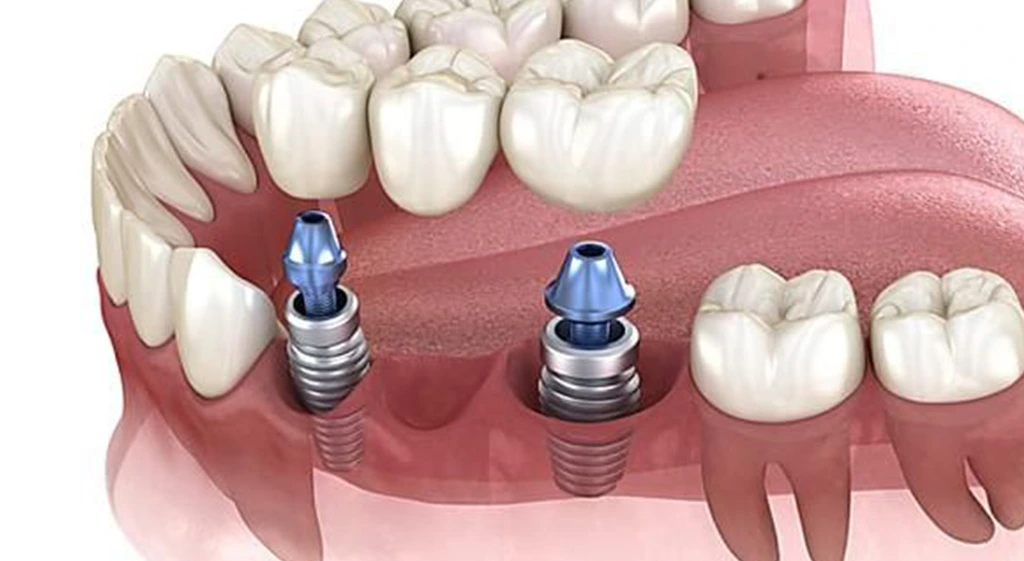
Traditional Dental Bridges vs Implant Bridges
Even though implant-supported bridges are a type of dental bridge, there are some differences between the two. A traditional dental bridge is supported by natural teeth, whereas an implant-supported bridge is supported by two implants. A traditional dental bridge requires elective preparation, or cutting, of the adjacent teeth; an implant-supported bridge does not require reduction of any teeth, thus saving the natural tooth structure.
Placing dental implants is a surgical procedure, which may not be suitable for many patients, whereas dental bridges are less cumbersome, non-surgical procedures and may have a higher acceptance rate. Also, dental bridges may be favorable for patients who have bone diseases, inadequate bone support, bleeding disorders, uncontrolled diabetes, or any other condition that renders surgery a non-favorable option.
In situations where multiple teeth are missing, a traditional dental bridge may not be the treatment of choice, as the load on adjacent teeth is higher, which makes them weak. Here, placing implants and making an implant-supported bridge will have a better longevity.
Coming to the cost, implant-supported bridges are costlier when compared to traditional dental bridges.
Both dental bridges and implant bridges have certain pros and cons; the decision to employ the type of bridge depends on multiple factors, like patient health, socio-economic conditions, abutment condition, etc.


Materials Used in Dental Bridges
Dental bridges are made from various materials, each offering different levels of strength, durability, and aesthetics. The choice of material depends on factors such as the location of the bridge, patient preferences, and budget. Below are the main types of materials used in dental bridges:
Metal-Based Bridges
- Full Metal Bridges : They are made from metal alloys such as stainless steel, titanium, nickel-chromium, gold, etc. They have good durability, strength, and load-bearing capacity. However, there are aesthetic concerns since they lack the natural tooth appearance.
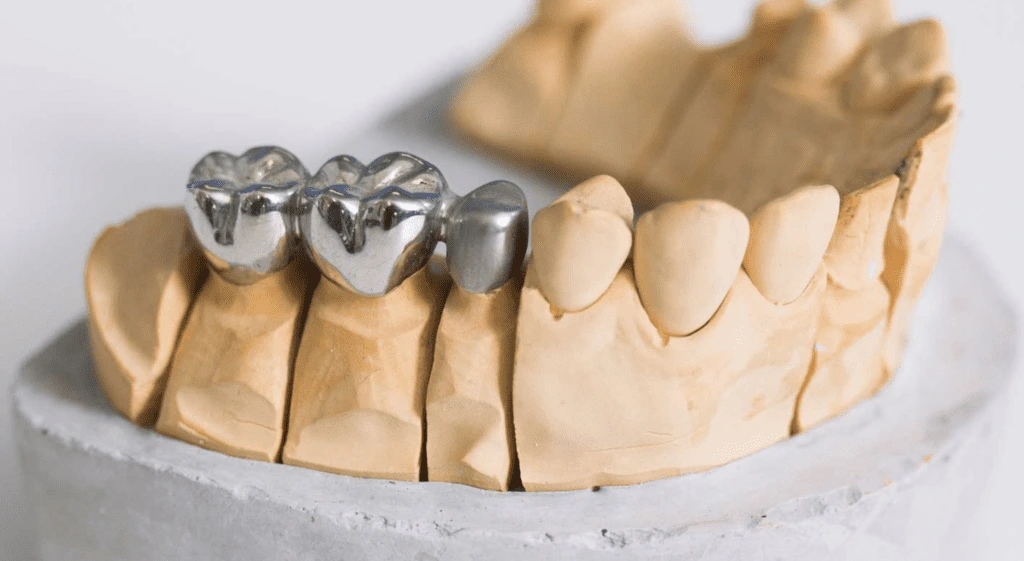
- Porcelain Fused To Metal Bridges (PFM): These are a combination of both - metal and porcelain. They have a metal framework which provides strength and an outer layer of porcelain for aesthetics which mimics natural tooth colour.
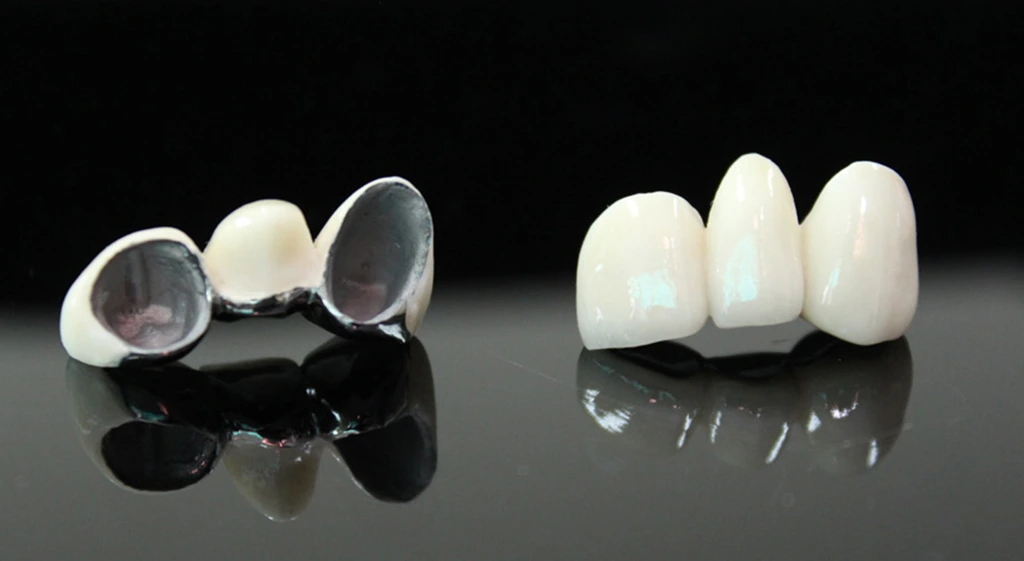
Metal-Free Bridges
- Zirconia Bridges : They are made from Zirconium dioxide and provide high strength, have superior aesthetics and are biocompatible.
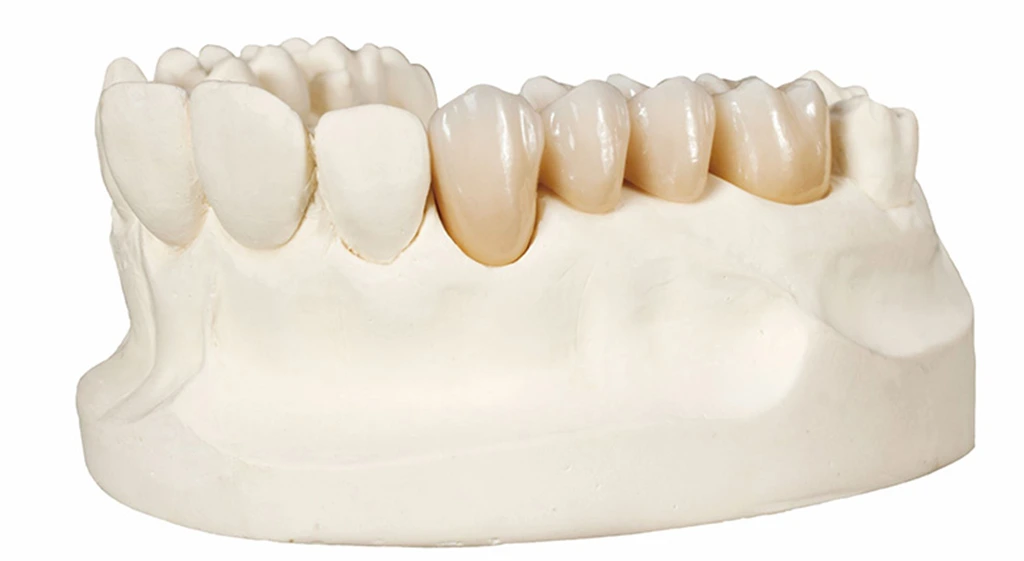
- Resin - Based Bridges : They are made from composite resin which is a tooth coloured material. They are used as a temporary prosthesis as they lack the strength and durability for a long term use.
Benefits of a Dental Bridge
A dental bridge helps restore missing teeth, improving both function and aesthetics. It enhances chewing ability, speech clarity, and facial structure while preventing adjacent teeth from shifting. Below are the key benefits of getting a dental bridge:
Restoring damaged or missing teeth
- A dental bridge restores function and structure, and helps to chew and speak without discomfort.
Improve chewing ability
- Bridges restore the biting surface of teeth and restore function, thereby allowing proper chewing and digestion.
Enhances Speech
- Bridges fill the gaps resulting from missing teeth and allow effective pronunciation and speech.
Aesthetic Benefits
- Bridges fill missing gaps between teeth and help to give a confident smile and mimic the look of natural teeth. They help to boost confidence and self-esteem.
Disadvantages of Dental Bridges
While dental bridges offer many benefits, they also come with certain drawbacks. They require the reduction of adjacent teeth, may increase the risk of decay if not properly maintained, and do not prevent bone loss like dental implants. Below are some common disadvantages of dental bridges:
Tooth Preparation Required
- Dental bridges require preparation of adjacent teeth by reducing the enamel and shaping the tooth to create space for the bridge to be cemented.
- This causes potential damage to the adjacent teeth because of loss of tooth structure and may cause sensitivity and discomfort.
Potential Damage to Adjacent Teeth
- Lack of proper oral hygiene and additional excessive stress on adjacent teeth can increase the susceptibility to decay or fracture of teeth, which also weakens the dental bridge.
Risk of Bone Loss
- Unlike dental implants, traditional bridges do not stimulate the jawbone, thereby causing bone loss in the area of the missing tooth.
Cleaning Difficulties
- Food and plaque can accumulate under the bridge and make it difficult to clean the bridge. This increases the risk of cavities, gum diseases, and inflammation.
Procedure for Getting a Dental Bridge
The process of getting a dental bridge usually requires 2 to 3 appointments, depending on the type of bridge and the complexity of the case.
Consultation and Examination
- Evaluation of oral health and the state of abutment teeth will be checked by the dentist.
- X-rays or digital scans may be needed to assess bone and tooth structure.
Preparation of Abutment Teeth
- In the case of traditional, cantilever, or Maryland bridges, the abutment teeth need to be reshaped to accommodate the crowns of the bridge. This requires removal of some portion of enamel to create space for the crowns.
- In case of an implant-supported bridge, implants are surgically placed and allowed to heal and integrate with the bone for a few months.
Impressions or Digital Scans
- An impression or scan is made and sent to the dental laboratory for fabrication of dental bridges. It may take 7-10 days to make a dental bridge.
Temporary Bridge Placement
- A temporary bridge may be placed to prevent the prepared abutment teeth from damage and sensitivity until the permanent bridge is ready.
Fitting and Cementation
- Once the final bridge is ready, the temporary bridge is removed.
- The final fit of the final bridge is checked, adjustments are done accordingly, followed by cementing the bridge
Follow-Up Appointments
- Regular follow-up is done after a few weeks to ensure the fit of the bridge and comfort for the patient.
Frequently Asked Questions (FAQs)
How Long Do Dental Bridges Last?
With proper care and maintenance, dental bridges can last for upto 5-15 years or more. However, it also depends on factors like oral hygiene, diet, and regular dental checkups.
If the dental bridge shows any signs of wear or damage, there may be a need to replace them. Visit your dentist if you notice this happening.
How do I take care of the dental bridge?
To maintain the longevity of the dental bridge, practice good oral hygiene, including regular brushing, flossing, and visiting your dentist for regular follow-ups and cleaning.
Is the Procedure Painful?
The procedure is typically performed under local anaesthesia, so you should not feel pain during the process. If you experience discomfort, it can be managed with pain relievers.
Contact your dentist if you experience extreme discomfort or pain post-treatment.
What Should I Do If My Bridge Falls Off?
If your dental bridge falls off, carefully remove it, rinse it, and store it in a clean container. Avoid putting the bridge in your mouth by yourself. Visit your dentist for a checkup or for reattachment or replacement of the bridge.
Notice gaps in your teeth? Visit your nearest Dhriti Dental branch, Nallagandla or Manikonda, for expert and gentle dental treatment. Whether you need a check-up, a dental bridge, or other care, our team is here to help. Keep your smile healthy—book your appointment today!
